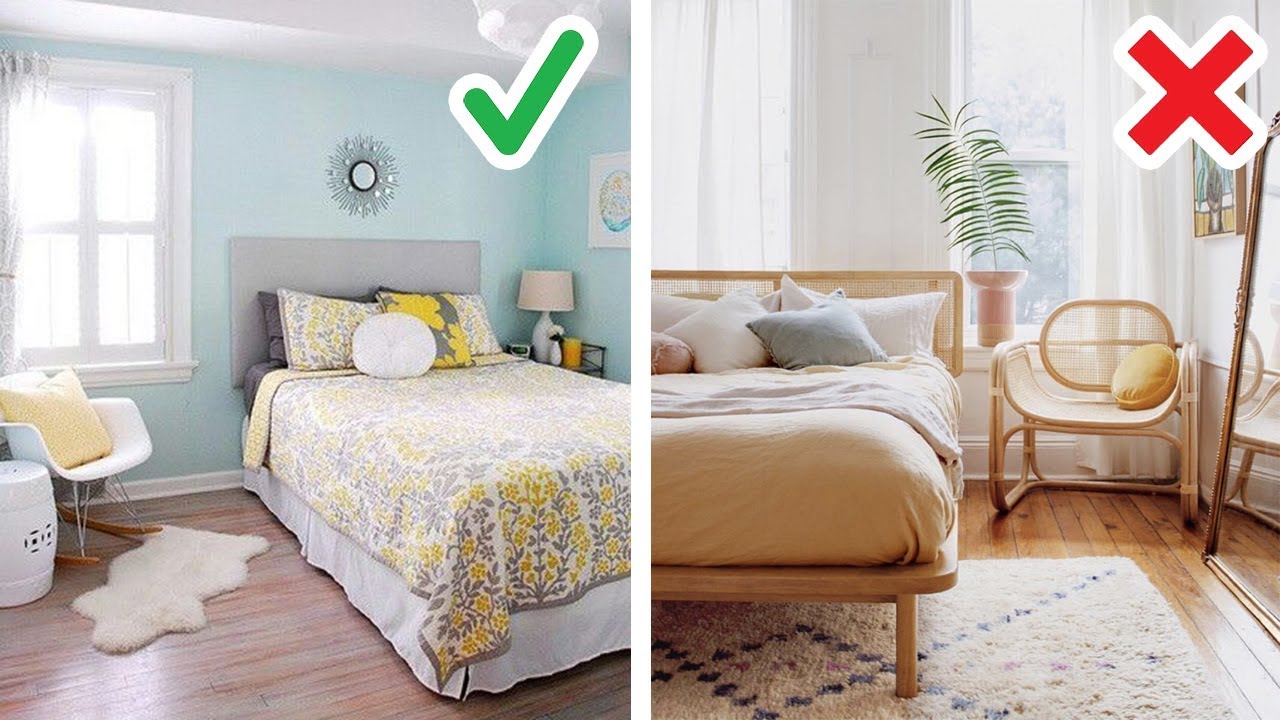Interior decoration is both an art and a science. Perhaps you’re thinking of a major remodeling project, or you’re moving house. Whatever the reason for designing your living spaces, remember that you have the choice of whether to hand the job over to a professional or take it up as a DIY project of your own.
It’s important to keep in mind that whichever route you choose, don’t skimp on the essentials. Use the best available quality of materials and products that fit into your budget, and you’re set for the long haul. Cheap stuff tells very fast – you could find paint fading or chipping, flooring gets scratched, laminates curl and bend, while low-cost paste-on tiles fall off.
Decorating a small bedroom can be easy if you know exactly what you want. Most people’s top priority is to ensure that it doesn’t look like a “cave” or a “cubbyhole.” Keeping this aspect in mind, there are many clever tricks and strategies you can use to give the appearance of space.
One of the challenges of a small bedroom is that you need to be constantly vigilant about what you add to this space. Every inch counts, and it’s a great policy to get rid of something before you buy something new for your bedroom.
Types of Bedrooms
In terms of interior design, architects classify bedrooms according to the people who will use them. Though we spend more than a third of our lives sleeping, many other activities happen here. For instance, we retreat into our bedrooms when we want private moments, practice our hobbies or interests, study, work or read, listen to music, or watch TV.
Master Bedroom:
This is generally the largest-sized bedroom, meant for the adult couple’s use in the family. They provide a restful and calm atmosphere where people can unwind. They usually have an en suite bathroom, a balcony, or access to a deck where you can enjoy a spell of the outdoors.
Guest Bedrooms:
These are meant for the use of guests and may also have an adjoining bathroom. The closets in this room are usually kept empty for the use of the guests.
Children’s Rooms:
Depending on the number of children using a room, you can furnish these rooms accordingly. Bunk beds, a space for studying, shelves for toys and books, and access to a common bathroom are features of children’s rooms. Bright colors, sturdy furniture, and lots of storage are important. As the children grow up, they may want privacy and a separate room of their own. Teens spend a lot of time in their rooms and want a décor that reflects their personality. It’s important to choose furniture in children’s rooms that can be up-scaled as the child grows.
How To Decorate Small Bedrooms
Whether it’s a master, guest, or kids’ bedroom that you plan to decorate, if it’s a small one, the priority would be to make it appear larger than it is. There are myriad different ways to deceive the eye into thinking that there’s more space than there is in reality. Creating these optical illusions takes a considerable amount of time, patience, and effort, but the rewards are amazing.
Splurge On Essentials:
While it’s tempting to cut costs on bedroom furniture, remember that this is where you need to refresh and rejuvenate yourself to face every new day. Ensure that the main piece of furniture – namely, the bed – is of the best quality you can afford so that you save on medical bills down the line. While choosing drapes, keep to a medium budget so that you can change them when you get bored and want a different look.
Work With Height:
Small bedrooms look cramped because of the distance between walls, ceiling, and the floor is measured and analyzed very easily by the eye. You can counter this by smart visual illusions. Keep the floor in a lighter hue, the walls in pale, cool colors, and the ceiling in a darker shade. You can also fool the eye into thinking there’s more vertical space by providing a focal accent on the ceiling – if you like bold themes, paint gold dots or stars to draw the eye instantly upwards. Ensure that shelving is kept at a height and painted the same shade as the walls. Make sure the bed is at a low level to give the eye more wall space to look at. Buy furniture with legs to give the illusion of space and avoid tall, stand-alone objects and furniture. Hang full-length drapes in light colors for daytime use. You can have a heavier set of drapes pushed up against the wall to be used when you need dimness and privacy.
Mirrors:
They are a great, easy, and cheap way to add light, airiness, and interest to a small bedroom. Mirrors reflect and bounce the light around, providing the illusion of space. If you love dressing up, don’t shy away from adding a light mirror in your bedroom. It provides interest and drama in an otherwise boring space while being immensely functional and practical at the same time. A bare wall or door is a great place to install large mirrors. If angled properly, mirrors can create illusions of depth and height. It’s a great idea to place a single large mirror opposite a door or window to give the illusion that there’s more space in the room and beyond.
Rule of Thirds:
In professional interior design parlance, working with the thirds rule is an excellent approach to making spaces appear the way you want them to. This means you mentally divide the wall-space into three. The floor level is the first section where you have furniture, flooring, etc. Hang art closer to the next third and keep shelving to the top third closer to the ceiling for maximum space effect. This draws the eye gradually upwards in stages and makes rooms with lower ceilings look taller.
Post You May Also Like




